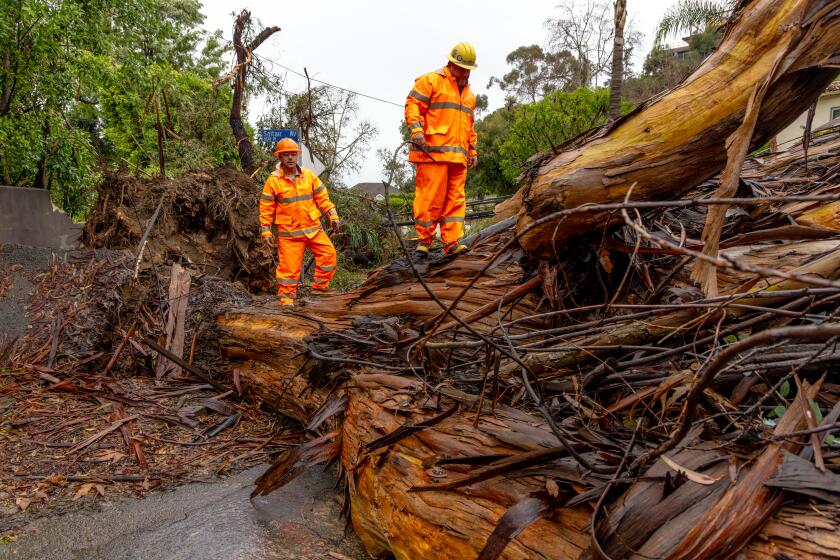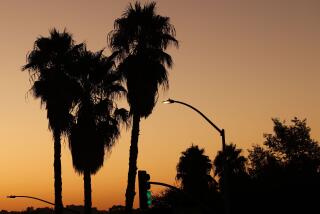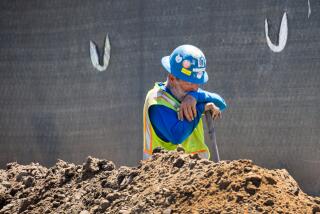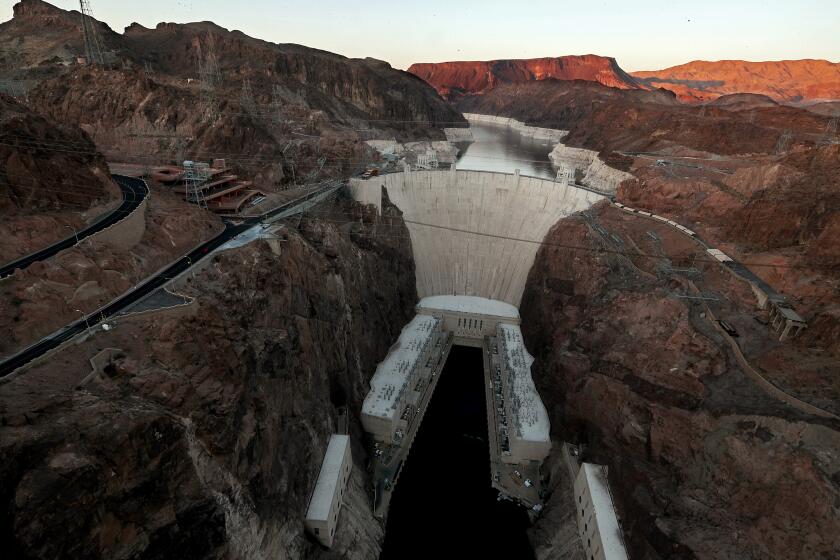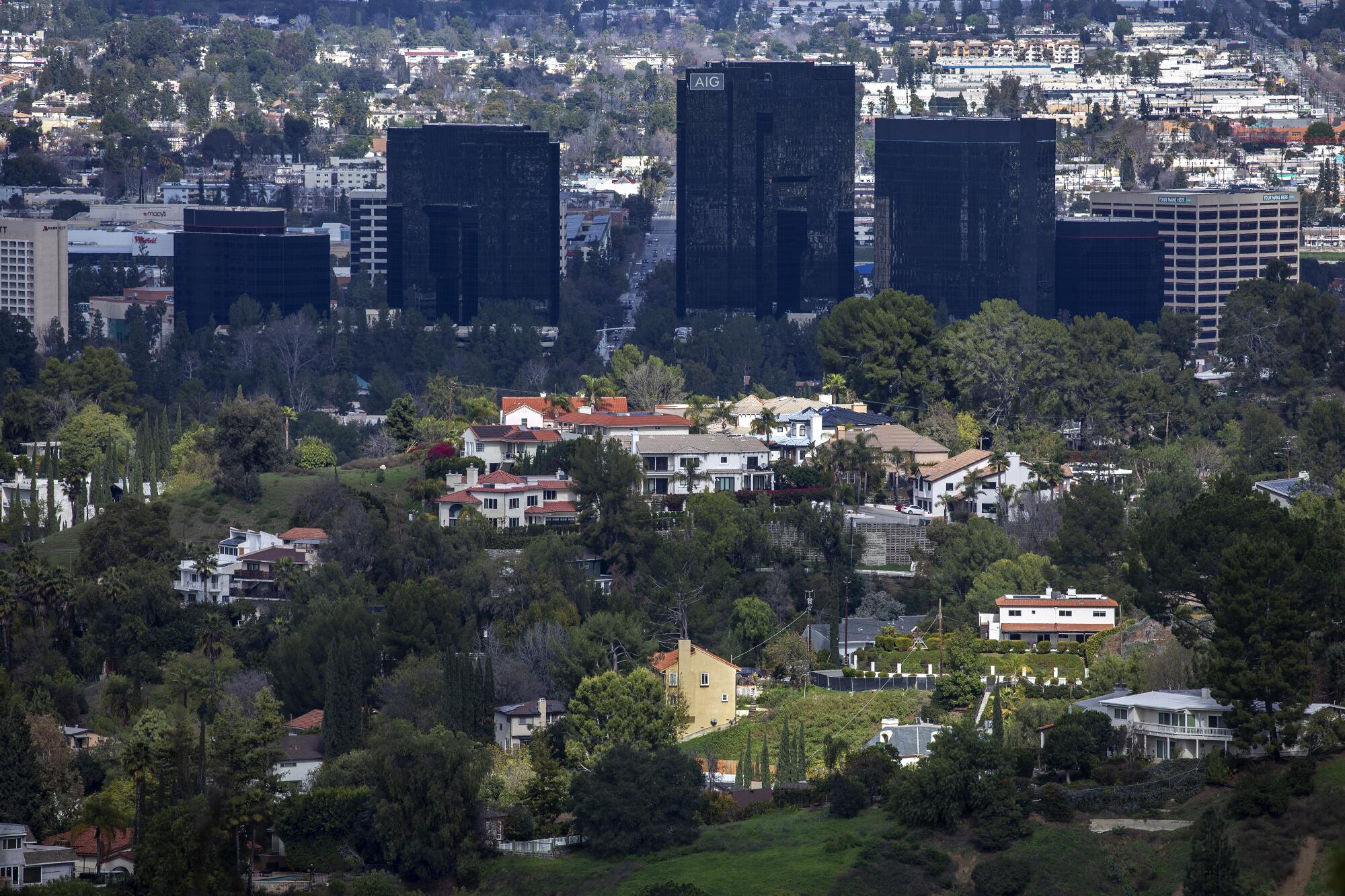
When Tony Clark noticed a small leak in his roof over the weekend, he didn’t sweat it. The storms had knocked a tile out of place, but the longtime Woodland Hills resident was accustomed to improvising when the weather got extreme.
Clark found a tarp to block the water until the rain passed.
“If you want to live out here, you’re gonna have to put up with high prices and extreme temperatures,” said Clark, 60, who has lived in the neighborhood for 20 years. “We’re the bottom of the valley — Woodland Hills is the basin — so we’re gonna get the hot hots and the cold colds.”
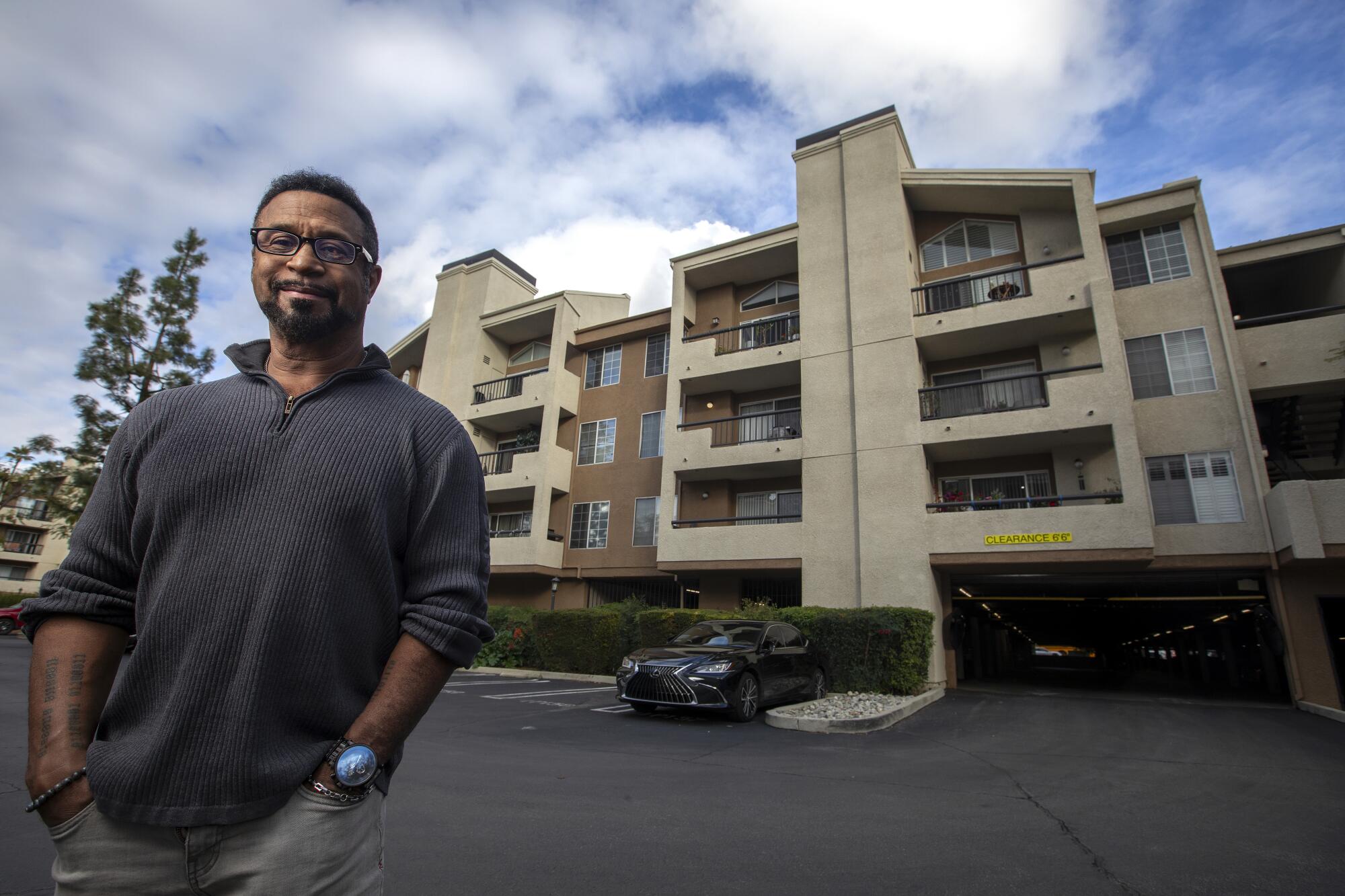
California has been battered over the last decade by the effects of climate change and extreme weather — from calamitous brush fires and record heat to intense storms and flooding.
But Woodland Hills, a hilly, prosperous San Fernando Valley suburb, has taken more than its share of the pain.
The most recent monster storm dumped 12.62 inches of rain on Woodland Hills as of Tuesday evening, according to the National Weather Service. By way of comparison, downtown Los Angeles usually gets about 14 inches of rain a year.
“The fact that Woodland Hills has gotten 12 inches in a few days is pretty remarkable,” said NWS forecaster John Dumas.
California was hit by a monster atmospheric river storm that killed at least nine people, left record rainfall and caused mudslides in the Southland.
Less than four years earlier, Woodland Hills set another extreme weather milestone, hitting a skin-blistering 121 degrees, the highest temperature ever recorded in the county.
Residents who have noticed the changes are trying to learn to live with them.
Clark grew up in Granada Hills and is a self-proclaimed “Valley guy.” He settled in Woodland Hills, he said, because of its proximity to great restaurants and the beach. Over the last few years, however, the weather has only gotten more and more extreme.
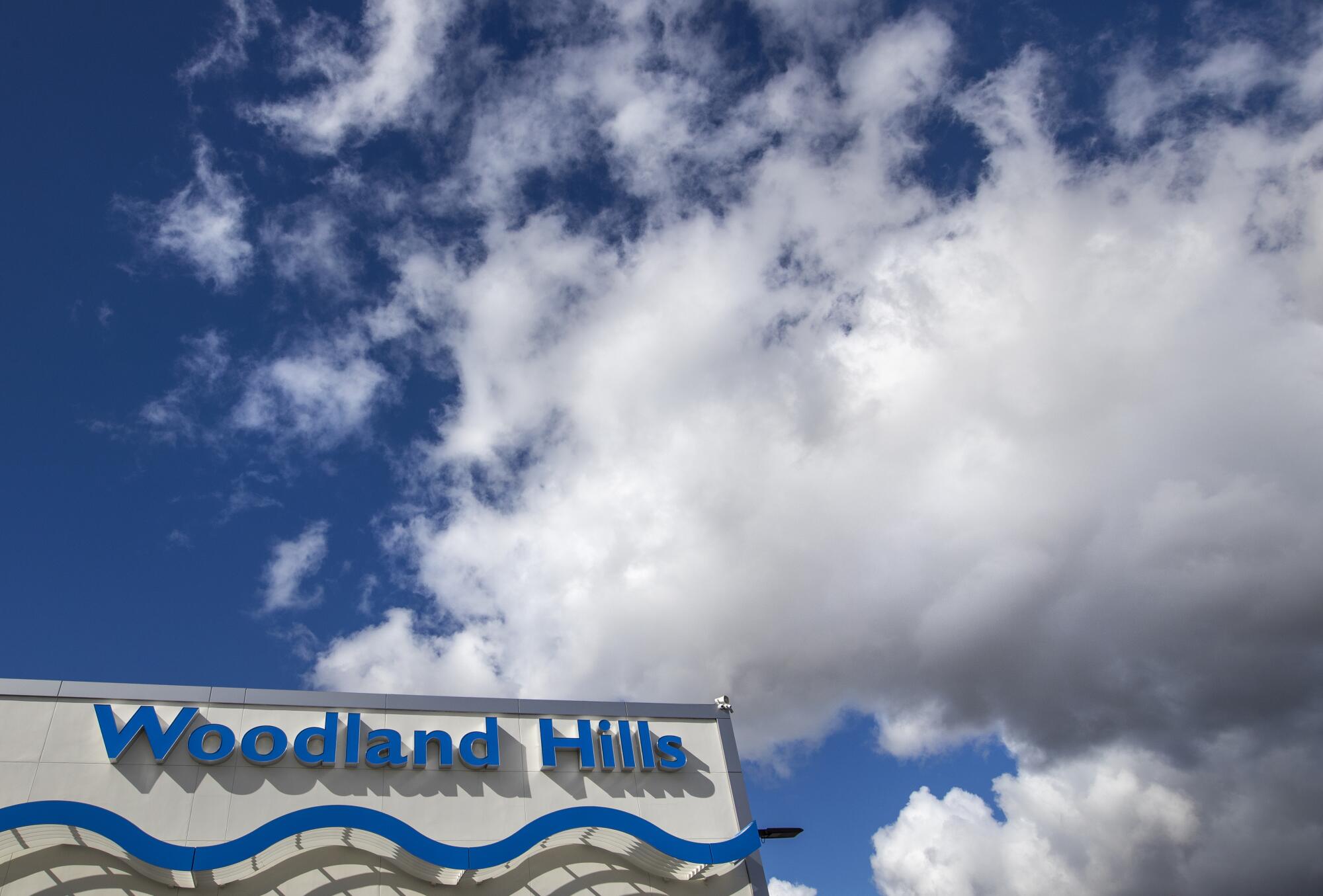
A few years ago, Clark got into his car and saw that the external temperature thermometer read 118 degrees. He snapped a picture to send to friends who didn’t live in the area and didn’t believe that it could get that hot.
On the heels of Earth’s warmest year on record, Clark believes the sweltering temperatures could have something to do with climate change.
“It never used to be this hot out here,” he said from a Starbucks in Woodland Hills on Tuesday. “It’s been continuously getting hotter and hotter over the years and the rain’s pretty intense. Something’s going on.”
Nestled in the San Fernando Valley next to the Santa Monica Mountains, this quiet L.A. neighborhood has always borne the brunt of some of the most extreme weather in Los Angeles County.
What did Woodland Hills do to deserve this? As with property values, it’s all about location, location, location.
Although it’s near the ocean, the neighborhood is the last to receive the respite of a cool breeze during heat waves. That’s because the Santa Monica Mountains block the air blowing in directly from the ocean.
Instead, marine air has to make its way from the beaches through downtown, Glendale, Burbank and lastly into the western corner of the Valley under the Santa Monica Mountains to Woodland Hills.
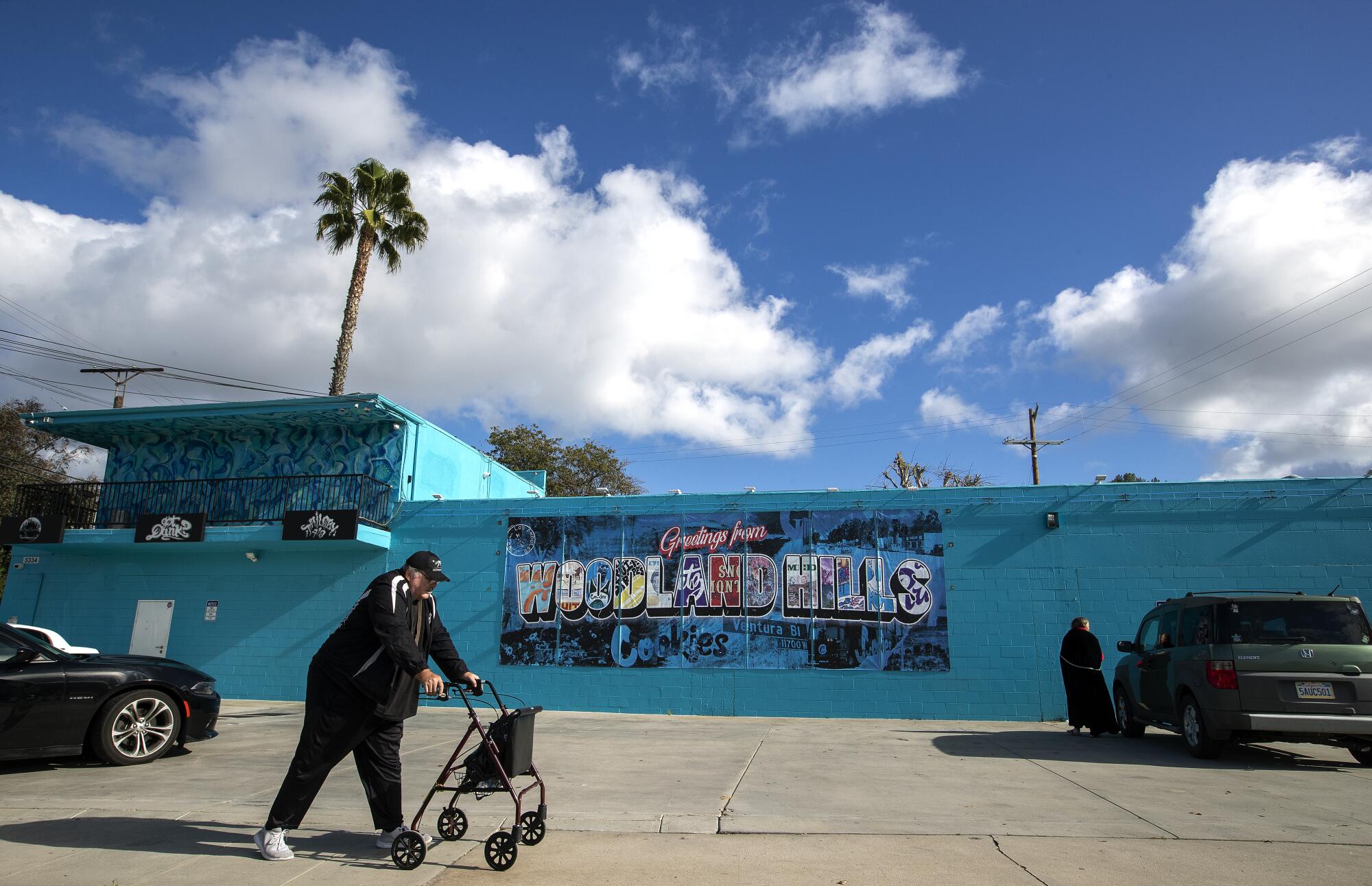
“The ocean breeze is basically nature’s air conditioning,” said NWS forecaster Ryan Kittell, adding that for Woodland Hills, “it takes a lot longer for that AC to kick in.”
That cooling breeze also warms as it travels, sometimes leaving little respite by the time it reaches Woodland Hills, Kittell said.
“Sometimes it doesn’t get there at all,” he said.
But the region also sinks to freezing temperatures almost every year during the winter. It hit 18 degrees, tied for its record low, in 1989, according to the National Oceanic and Atmospheric Administration.
Like most storms in Southern California, this week’s system traveled from north to south. But in order for that moisture to turn into rain, it has to cool down first. That’s where the mountains, stretching from east to west perpendicular to the storm, come in.
“It’s like a ramp,” Kittell said. “If the winds are blowing from south to north, they go to Malibu and just go up.”
As that moisture rises, cools and turns into rain, it deluges Woodland Hills, which is located in the foothills.
Climate change in particular has made extreme weather events even more severe over time, according to Daniel Swain, a climate scientist at UCLA. Although the state isn’t necessarily getting more rain per year on average, when it does, the storms are heavier. Heat waves are also lasting longer and becoming more intense.
“We don’t have to go very far back in time to see we had one of the driest seasons on record recently,” Swain said. “But then last year was really wet, and this year was super wet. So we’re experiencing extreme drought and now we’ve experienced extreme precipitation in the last decade.”
Chance Beauchamp moved to Woodland Hills two and a half years ago when his girlfriend entered law school at nearby Pepperdine University.
The Orange County native said it was an adjustment getting used to the scorching temperatures.
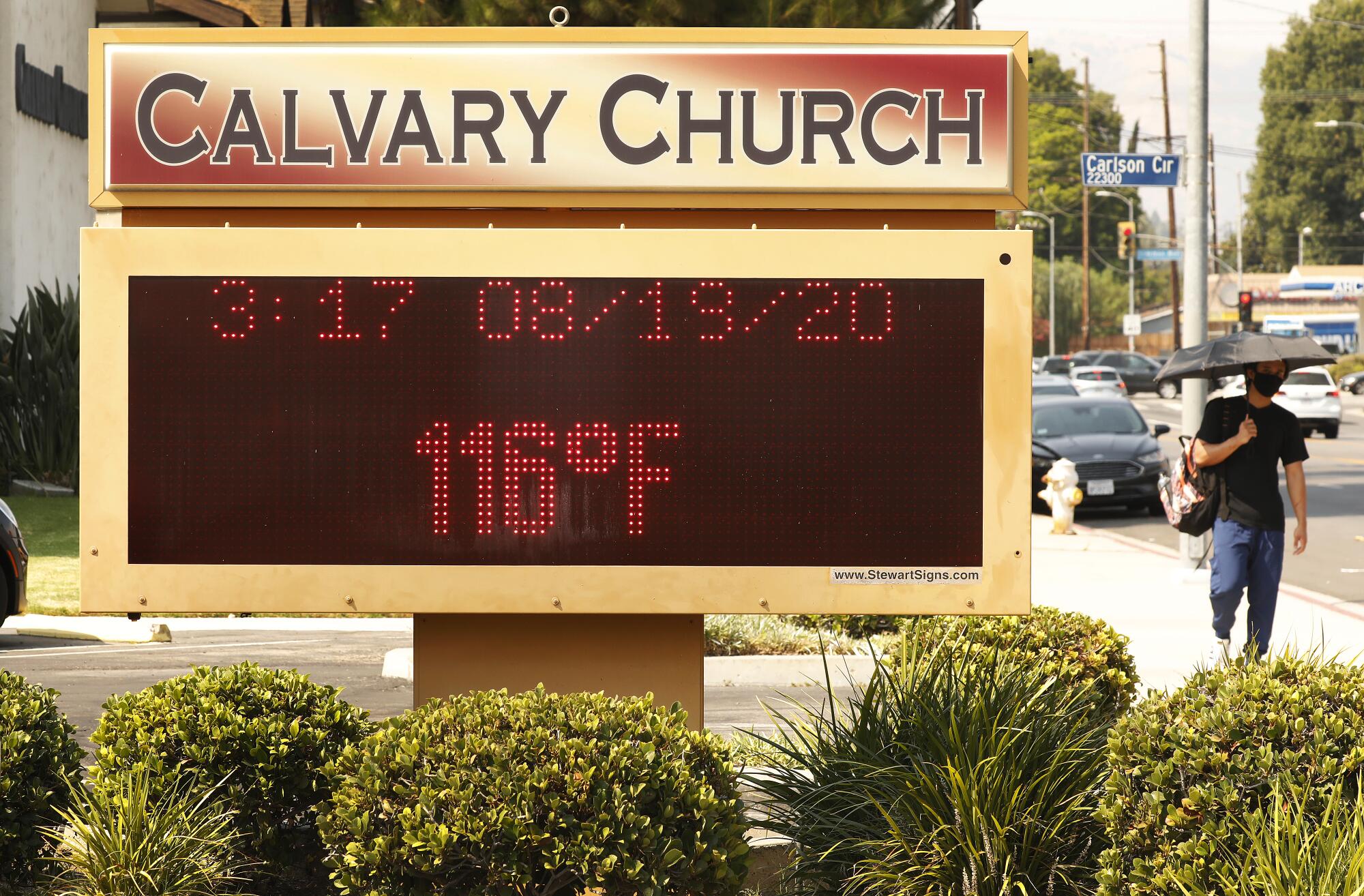
“It’ll get into the 110s during the summer and it’s kind of brutal,” he said.
To brace for the storms, the 27-year-old stocked up on groceries and prepared to stay at home for several days. It poured from early Saturday all the way to Monday evening, causing Beauchamp’s roof to spring a leak. He’ll have to find someone to repair it before the next big storm.
“It wasn’t the most intense rain, but it was definitely the most consistent, nonstop rain I’ve seen so far,” he said. “It was crazy.”
Clark, who works in tech support, had to brave driving in the rain to deliver a computer to a client. He made sure to stay in the middle lanes on the freeway to avoid fishtailing in the big puddles.
“It was intense. I could hardly see at some points,” he said. “It was coming down that hard, even with the windshield wipers at full speed.”
Brittany Stewart didn’t have the luxury of waiting out the storm indoors, either. She had to drive through the rain to get to her job as a barber.
“It was scary, especially at night,” she said. “People tend to speed and slam on the brakes and hydroplane. The streets get flooded, the freeways get flooded. I don’t know what we can do about that.”
The 41-year-old said there was very little damage to her house, except for some mild flooding in her garage. Stewart has lived in L.A. County nearly 30 years but in Woodland Hills only four.
There’s been more rain during the last few years, but Stewart said that just comes with the territory.
“Woodland Hills — it’s either the hottest or the coldest or it gets the most rain,” she said. “Whatever’s happening, it’s always in the spotlight.”
More to Read
Sign up for Essential California
The most important California stories and recommendations in your inbox every morning.
You may occasionally receive promotional content from the Los Angeles Times.
